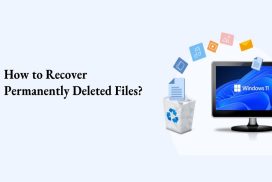Integrating Monetization SDKs: A Step-by-Step Guide for App Developers
Monetization is not the most pleasant and seamless addition to any app or software. Essentially, it’s about finding ways to generate income from your users. Hence, such efforts frequently disrupt the standard experience users wish to have.
For example, a user wishes to access a particular section or feature. Then, all of a sudden, an ad plays, or a message urging to upgrade to a premium version pops up. However, the current monetization strategies make owners’ money-generating techniques less painful to users. Thanks to SDKs (Software Development Kits), developers can use modern tactics that interrupt users’ experience on a minor level.
This guide discusses the SDK integration process from the very beginning. While we don’t go into the technical details, the introduction should help you see the benefits of including monetization SDKs in apps.
What is an SDK?
Software Development Kits (SDKs) are collections of different resources, such as libraries, compilers, or documentation, that help you build your application. So, an SDK could help you create certain parts of your program without writing code. As a result, you can save time and spend it on polishing other components.
When it comes to monetization SDKs, they are chunks of code that let you monetize your application differently (or more conveniently). A most common monetization SDK could enable you to integrate particular ads. In some cases, they are focused on a specific target audience (for instance, gamers).
Note: SDKs are commonly discussed together with APIs. However, they are two different concepts. An API (Application Programming Interface) is the setup that allows two software parts to communicate.
A simple example of an API could be a Single Sign-On option you see when joining a new service. You could choose to use your current Microsoft account to sign up and skip the process of creating a new account. In this case, the service communicates with Microsoft and receives certain information about you to create an account.
A brief recap on monetization
Monetization is all about finding ways to make money from specific resources. In the context of applications, it refers to ways developers use to generate money. The most common monetization strategies for programs include:
- Direct payments for using the application are likely the most common approach. Users need to pay a certain sum to begin enjoying your application.
- In-app purchases are also common, which means that users purchase specific in-app items. For games, this could commonly refer to special gear or boosts.
- Selling certain parts of your app as an API for others to use could also be a way to monetize your projects.
- Subscription models mean that users pay a certain amount to use the app for a certain period.
- Data monetization has also boomed over the years. For instance, app developers could collect certain information about users and sell it. Of course, it includes abiding by different laws and guidelines (like GDPR in Europe).
Picking the right SDKs
The correct SDKs can significantly improve your monetization strategies. Hence, you need to pick the best ones. You might find many options online, but these services have proven themselves and are popular among developers:
- AdMob SDK is one of the most common options; its name indicates its purpose. Introduced by Google, AdMob specializes in letting you integrate various types of ads into your application. That includes multiple formats that best suit your needs and disrupt the user experience the least.
- Unity Ads SDK is a comprehensive SDK with the tools for monetization and the analytical aspect for tracking your progress. Additionally, it does not focus solely on ads. It facilitates other monetization strategies, like in-app purchases.
- AppLovin SDK is another intricate option for monetizing your application. It specializes in helping different programs earn money, regardless of type and industry. Specifically, AppLovin offers MAX. Integrating it lets you add different ads to your app: native, MREC, banner, rewarded, and more! As a cherry on top, it also supplies analytics to check your success.
- Honeygain SDK is another option that brings a more modern approach to monetization. Developers can receive money after users agree to share their internet connection. The payments for shared internet goes to the developer. Of course, in exchange for sharing their internet, users receive some benefits (like premium app versions or special features).
See what changes are needed
The SDK integration process refers to importing the library file into your project. As a result, the program can now include the chosen monetization strategies. Usually, there are specific technical steps you need to perform to integrate it:
- Ensuring that your IDE runs the latest version.
- If needed, the SDK could require some dependencies. So, you need to install them before completing the integration.
- You might also need to generate API keys to facilitate communication between your app and the SDK.
- Another step is actually adding the SDK to your project directory.
- That might also include and require some changes to your app code.
Luckily, the SDK owners typically have in-depth tutorials on how to do this. Additionally, you can contact them and ask for assistance if something does not work as intended. Usually, they are more than happy to help developers with their questions.
Depending on the SDK, you might also need to perform some testing to ensure that the added code integrates seamlessly with your app.
Monitor your journey
Many SDKs include tools for monitoring how your monetization strategy performs. Don’t take this addition lightly. Pay attention to your statistics and which, say, ads perform the best. This is crucial for further optimizing your monetization strategies. Additionally, you might conclude that specific SDKs don’t perform as well as expected. Then, you can attempt to customize your approach or eliminate it entirely.
Common issues with app monetization
The biggest hurdle for app developers regarding monetization is ensuring a smooth user experience. Many monetization strategies disrupt users’ experience. So, the goal here is to use tactics that keep the interruptions to a minimum. After all, many users constantly uninstall apps that bombard them with ads (and bad ones).
The best way to use app monetization successfully is to offer users value. This could mean that ads are relevant to their experience. In other cases, it could be rewarded monetization, meaning users get something out of it. The best strategy is to perform market research on what ad formats work for your competitors’ apps. They can provide highly insightful information, letting you build your own monetization model.
Also, double-check the reliability of monetization SDKs you encounter. Many of them could offer fake or deceptive software components. Instead of offering certain features and opportunities, they could do nothing or even add malicious elements to your application. Hence, while bogus SDKs could only relate to revenue loss, malware disguised as an SDK could also mean more alarming issues.
Conclusion
Overall, SDKs simplify not only the general software development process. They have become essential players in monetization as well. So, explore the available SDKs, pick the ones that suit your needs, and take advantage of their analytics tools. Then, you can see which strategies and approaches work best for your targeted audience. As a general rule, always remember to offer value through your monetization (even if it might initially appear challenging).












